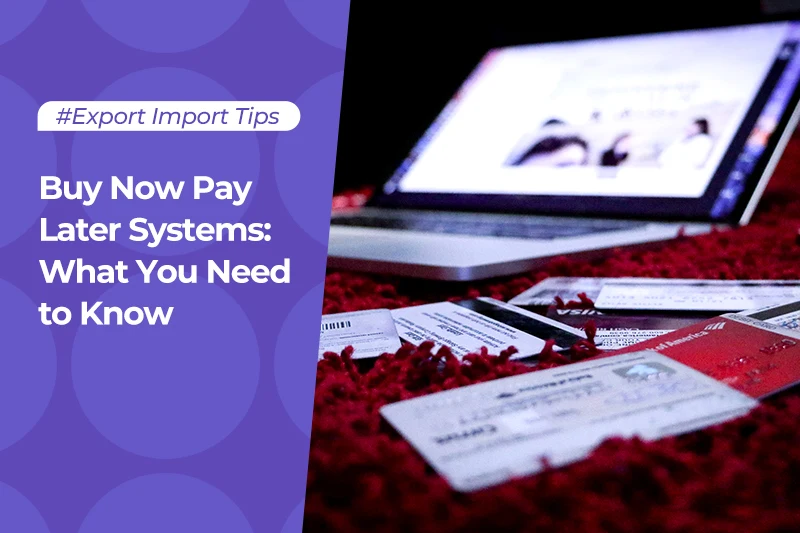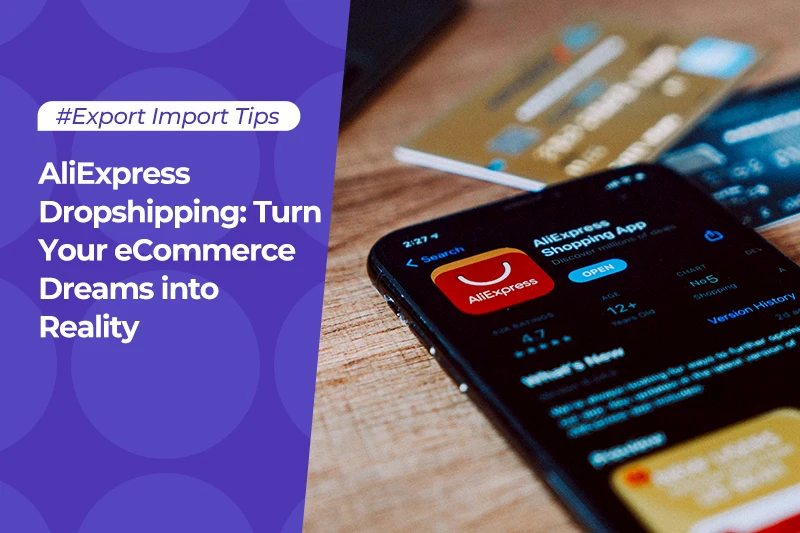How to export to Vietnam: 5 products you can sell

While the global pandemic continues to disrupt travel and international trade around the world, Vietnam’s economy has remained resilient. In fact, in 2020, Vietnam’s economy grew by 2.9 percent, one of the highest growth rates in the world. This year, Vietnam businesses are set to support the country further, and growth is projected to reach 6.5 percent in 2021, thanks to government support and the country’s fast response to COVID-19. So, if you’re an international manufacturer hoping to move into this healthy market, get ready to learn how to export to Vietnam and five products in demand by Vietnam businesses. 1
Table of Contents
An in-depth look into the Vietnamese trade economy
Vietnam is a vibrant Asian economy, with a large market for capital goods and a growing domestic demand for consumer goods. A member of the World Trade Organization or WTO, Vietnam has great ambition to develop major infrastructure including a new international airport and urban railway network.
Vietnam is conveniently close-by to Thailand, Philippines, Singapore, China, India and Malaysia, making it an ideal export hub to reach ASEAN markets. The port of Ho Chi Minh City is located on the Saigon River and features a network of ports, creating a lucrative import and export hub in the south of the country. As the country’s most valuable economic center, it contributes to over two-thirds of Vietnam’s economy and supports a wide range of industries.
In 2020, goods exports rose by 23.8 percent, which helped give the economy a significant boost, while the rest of the world struggled to prevent the spread of COVID-19. Vietnam also benefits from new trade agreements, like the EU-Vietnam Free Trade Agreement and the Regional Comprehensive Economic Partnership, which helps keep Vietname businesses competitive. 2
Vietnam mainly imports electrical machinery, computers, mobile devices, plastic, mineral fuels, iron and steel, and optical, technical, and medical equipment. However, new opportunities are emerging for manufacturers to export to Vietnam. It has recently been named as one of the most promising Southeast Asia countries for the Australian wine industry. Since Australian wine is currently subject to tariffs in some countries, Vietnam offers an exciting destination for manufacturers to distribute and sell Australian wine to ASEAN markets. 3
But, that’s not all! Vietnam is also at the beginning of becoming a digitalized society, with a young population that loves technology, according to Ralf Matthaes, managing director of Ho Chi Minh City-based Infocus Mekong Research. There are over 49,063,762 internet users in Vietnam and 25,162,000 smartphone users. With the rise of online shopping, smartphones are becoming essential for economies to thrive and are therefore in high demand. 4Manufacturers able to provide smartphones and gadgets should certainly seize this opportunity and establish a presence within the Vietnam e-commerce market selling high-quality electronic devices. 5
Know the regulations when exporting to Vietnam
If you want to start exporting goods to Vietnam, you’ll first need to understand the rules and regulations currently in place for manufacturers when trading with Vietnamese businesses. From import duties and export control to FTAs, read on to learn everything you need to know before selling your products to customers in Vietnam.
Trading company license
Vietnam doesn’t require a manufacturer to have an import or export license to set up a trading company, but a foreign investor must register with the Department of Planning and Investment to start trading, as well as obtain an Investment Certificate to import and export to and from Vietnam.
Tax & export control
If you’re a UK manufacturer, you should know that the UK and Vietnam have signed a double taxation agreement, to prevent income from being taxed twice when exporting goods to Vietnam. Most regulations on the Vietnamese VAT regimes are included in the Law on Value Added Tax. Importers are required to pay tax in full including VAT.
Also, note that drop shipping is not subject to tax exemptions or reductions. However, VAT is not charged when goods cross the Vietnamese border and are temporarily imported to then be re-exported at a later stage.
You will be charged import tax on almost every type of product you import into the country, but the fee will depend on what you are importing. This could be 0% up to 10%. There may also be a Special Consumption Tax added for certain goods such as cigarettes. 6
There is also export control in place to prevent some goods from being imported into the country and to protect the country’s free trade agreements.
- Goods exported must be in accordance with international treaties, to which Vietnam is a contracting party.
- Import control will prevent the import of chemicals, explosive pre-substances, and industrial explosives.
- Goods exported should not exceed quotas set by foreign countries.
5 products to export to Vietnam 2021
China is still the largest import market of Vietnam, with a turnover of $9.6 billion, followed by Korea at $5.2 billion and ASEAN with USD $3.4 billion. 7With a population of over 95 million and Southeast Asia’s fastest-growing middle class, Vietnam clearly represents a key market for foreign goods. So, here are five products worth exporting to Vietnam from abroad in 2021.
1: Medical equipment
The demand for high-quality medical equipment in Vietnam is on the rise, and this particular industry is one of the most promising sectors for foreign investors. The pharmaceutical industry in Vietnam has grown significantly from $5.2 billion in 2018 to $6.6 billion in 2020. In fact, the local government has also offered tax incentives to promote the industry and encourage foreign manufacturers to meet the growing demand in the country. 6Technological developments in cosmetic plastic surgery are also fueling the need for medical equipment, including x-ray machines and orthopedic appliances.
2: Australian wine
Helping Australia to cope with the great losses incurred due to the global pandemic, Vietnam’s wine market is a key opportunity for foreign import-export companies. Since China is no longer buying Australian wine in bulk, Vietnam’s thriving drinking culture is presenting Australia with a new and exciting market to supply. The South Australian Wine Industry Association announced in 2020 its plan to secure ASEAN partners and diversify exports, with Vietnam emerging as a top trading partner. While cheap local beer has been highly popular over the years, now middle-class consumers are demanding high-quality wine from overseas. And this wealthy middle class is expected to reach 101 million by 2025. Even New Zealand can benefit from exporting wine to Vietnam. 3
3: Smartphones & gadgets
Quickly becoming a prime market for international investment, e-commerce activities are growing across the country, triggering a growing need for high-quality electronics, smartphones, and gadgets. Samsung has turned Vietnam into a global manufacturing base for its products, investing over $17 billion into the country. Plus, as the middle class grows year on year, more people will have higher levels of disposable income, increasing their buying power, which can be spent on electronics and gadgets. 6
4: European chocolate & confectionery
A major importer of U.S processed food and snacks, totaling $774 million in 2019, manufacturers of high-quality chocolate and confectionery should consider Vietnam as a new and exciting market to move into this year. As the country’s tourist industry enjoys around 18 million international visitors per year, more money is being invested into the hospitality industry to offer more fine-dining restaurants, coffee shops, and luxury hotels. It’s true, Vietnam is developing a sweet tooth. A big player in the global chocolate landscape, as the country’s purchasing power increases, consumers are starting to buy candy on a regular basis and prefer brands such as KitKat, Mars, and Hershey’s. According to market research from Euromonitor International, chocolate sales and the demand for sweet consumer goods in Vietnam have increased by a massive 80 percent since 2011. 8
5: Machinery to support the country’s growth
As Vietnam steps up its infrastructure plans and aims to build a new international airport and rail network, machinery including air conditioners, computer parts, lifting and loading machinery, and solar panels all need to be imported from overseas. Vietnam imported $1.1 billion of air conditioner units in 2020, $640.1 million worth of loading machinery, and $2.4 billion in computer parts and accessories. 9International manufacturers able to provide such machinery should consider Vietnam as the next market to expand into and help support the country’s business sector, hospitality and tourism industry, and public transport services.
FAQs
Q: Which items are prohibited in Vietnam?
There are many items that Vietnam restricts from being imported into the country. These include but are not limited to; animal skins, bioproducts, chemicals, bearer documents, wooden goods of any description from Liberia, tobacco and cigars, petroleum oils, and satellite parts. Other products are also subject to regulations and registration, such as food supplements, dairy products, grain wine and cosmetics. It may be more challenging to import these items into the country.
Q: Are fruit and vegetables a good product to export to Vietnam?
Fruit and Vegetables are considered as one of the major export agricultural commodities in Vietnam, and the country does not need to rely on overseas produce.
Q: How long does it take to set up a trading company?
It can take up to three months to establish and set up a trading company in Vietnam. You’ll need to provide all relevant documents such as a business registration certificate, investment license, and import license.
Sell on Alibaba.com
While the top exporting countries are China, South Korea, and Japan, there is certainly room for new manufacturers to take advantage of the rising middle-class market in Vietnam.
If you’re thinking about opening a trading company in Vietnam to start exporting international goods into the country, you should read our latest articles on:
Managing international shipping in the time of COVID-19
How to find international buyers for your export business?
To give your manufacturing business the best possible chance of attracting relevant buyers in Vietnam and further afield, sign up to Alibaba.com and reach buyers worldwide in minutes. Promote your products and services online with ease and enjoy Alibaba.com’s ongoing support, education, and guidance for international manufacturers hoping to export goods overseas.
Our global marketplace helps B2B businesses worldwide connect with each other and establish profitable business relationships. Unlock your business potential, and create a professional digital storefront with no coding skill required. Alibaba.com is user-friendly and helps to empower manufacturers with easy-to-use digital tools to make selling online and on a global scale easier than ever.
References:
1. https://www.imf.org/en/News/Articles/2021/03/09/na031021-vietnam-successfully-navigating-the-pandemic
2. https://tuoitrenews.vn/news/business/20210414/vietnam-economy-to-expand-7-annually-in-202122-fitch-ratings/60368.html
3. https://www.vietnam-briefing.com/news/vietnams-wine-industry-opportunities-for-australian-investors.html/
4. https://merchants.glopal.com/en-gb/sell-online/vietnam
5. https://www.retailnews.asia/global-giants-crave-for-pieces-in-vietnam-e-commerce-market/
6. https://www.vietnam-briefing.com/news/vietnams-import-export-regulations-explained.html/
7. https://vietnamcredit.com.vn/news/overview-of-vietnams-export-import-turnover-in-january-2021_14286
8. https://www.euromonitor.com/
9. https://www.worldstopexports.com/vietnams-top-10-imports/
Start your borderless business here
Tell us about your business and stay connected.
Keep up with the latest from Alibaba.com?
Subscribe to us, get free e-commerce tips, inspiration, and resources delivered directly to your inbox.














